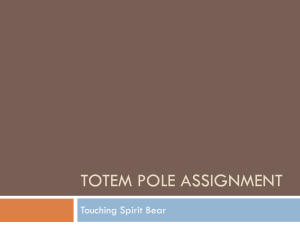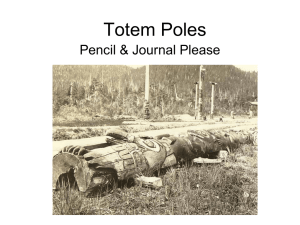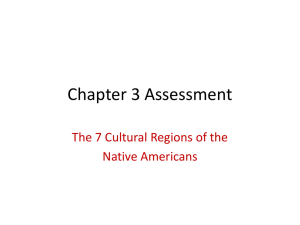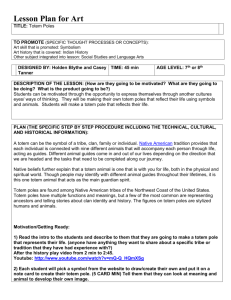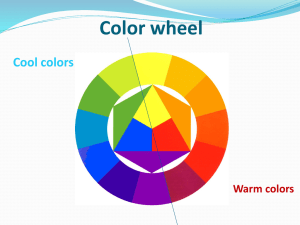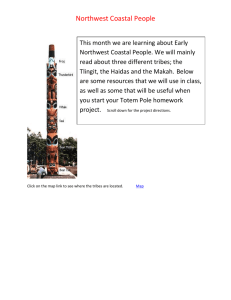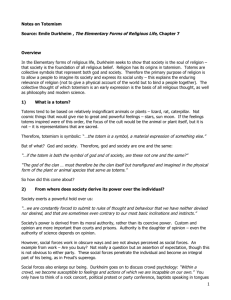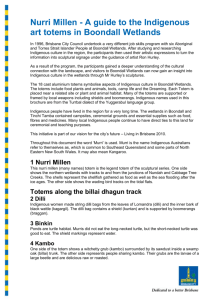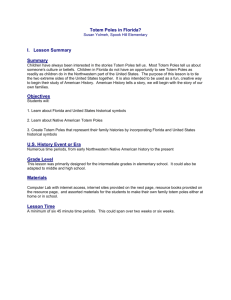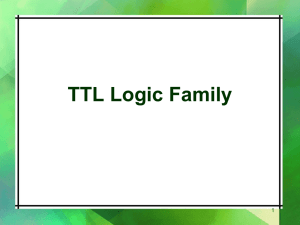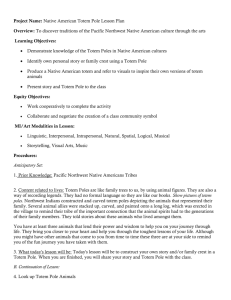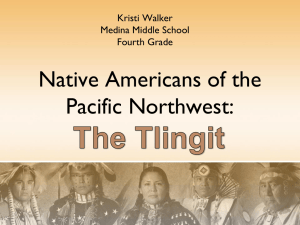Document
advertisement
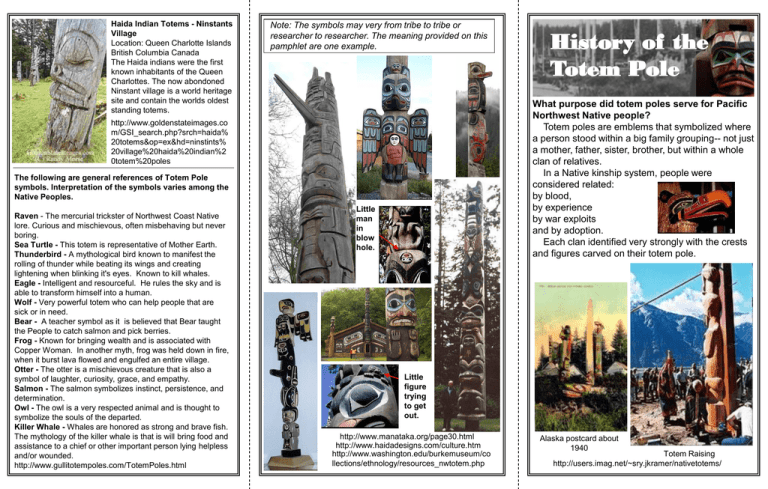
Haida Indian Totems - Ninstants Village Location: Queen Charlotte Islands British Columbia Canada The Haida indians were the first known inhabitants of the Queen Charlottes. The now abondoned Ninstant village is a world heritage site and contain the worlds oldest standing totems. Note: The symbols may very from tribe to tribe or researcher to researcher. The meaning provided on this pamphlet are one example. What purpose did totem poles serve for Pacific Northwest Native people? Totem poles are emblems that symbolized where a person stood within a big family grouping-- not just a mother, father, sister, brother, but within a whole clan of relatives. In a Native kinship system, people were considered related: by blood, by experience by war exploits and by adoption. Each clan identified very strongly with the crests and figures carved on their totem pole. http://www.goldenstateimages.co m/GSI_search.php?srch=haida% 20totems&op=ex&hd=ninstints% 20village%20haida%20indian%2 0totem%20poles The following are general references of Totem Pole symbols. Interpretation of the symbols varies among the Native Peoples. Raven - The mercurial trickster of Northwest Coast Native lore. Curious and mischievous, often misbehaving but never boring. Sea Turtle - This totem is representative of Mother Earth. Thunderbird - A mythological bird known to manifest the rolling of thunder while beating its wings and creating lightening when blinking it's eyes. Known to kill whales. Eagle - Intelligent and resourceful. He rules the sky and is able to transform himself into a human. Wolf - Very powerful totem who can help people that are sick or in need. Bear - A teacher symbol as it is believed that Bear taught the People to catch salmon and pick berries. Frog - Known for bringing wealth and is associated with Copper Woman. In another myth, frog was held down in fire, when it burst lava flowed and engulfed an entire village. Otter - The otter is a mischievous creature that is also a symbol of laughter, curiosity, grace, and empathy. Salmon - The salmon symbolizes instinct, persistence, and determination. Owl - The owl is a very respected animal and is thought to symbolize the souls of the departed. Killer Whale - Whales are honored as strong and brave fish. The mythology of the killer whale is that is will bring food and assistance to a chief or other important person lying helpless and/or wounded. http://www.gullitotempoles.com/TotemPoles.html History of the Totem Pole Little man in blow hole. Little figure trying to get out. http://www.manataka.org/page30.html http://www.haidadesigns.com/culture.htm http://www.washington.edu/burkemuseum/co llections/ethnology/resources_nwtotem.php Alaska postcard about 1940 Totem Raising http://users.imag.net/~sry.jkramer/nativetotems/ What about humor in the old days? One of the responsibilities of the totem's owner was to keep the carvers amused, warm, fed and happy during the long carving process. In times past, if the carvers felt they were not treated to top-of-the-line http://www.prm.ox.ac.uk/totem.html treatment, or if they were not paid what they thought they were owed, they might accidentally carve a figure upside down. Maybe if their treatment was really below par, they might carve the figure of the chief stark naked. When this happened, the chief was usually too embarrassed to raise the totem, so there are no examples of naked-chief-totems that we can see today. But we do hear stories. Today, the practice of carving things upside down looks so cute, that it's done fairly often. It's done on purpose. Made of cedar, totems served many purposes. Each figure represented an element in a story; together, the poles recorded the history and legends of the tribes, which had no written language. The figures on totem poles are not gods to be worshipped; rather, they represent certain traits or characteristics that the clan considered itself to embody. They are often compared to the emblems on a coat of arms or the Great Seal of the United States. Totem Poles: Heraldic Columns of the Northwest Coast http://content.lib.washington.edu/aipnw/wright.html Types of Totem Poles There are several types of totem poles. Genealogy poles were erected in front of a home to identify the owner’s clan and status. Memorial poles were raised in honor of a deceased clan member. Mortuary poles served the same purpose but included a compartment for the ashes of the deceased. Shame poles were carved to castigate a person who had wronged the clan or village. Shame poles were taken down only after the offending person had made appropriate reparation. Other poles depicted myths or legends of the clan or were raised in honor of important deeds or events. http://digitallibrary.usc.edu/search/controller/view/chs-m13862.html Additionally, each totem symbol can be traced back to a mystical clan-founding ancestor. Totem origins are so far back in time that they are non-human. For example, a person exhibiting a Wolf totem believed one of their ancestors once lived with supernatural Wolves, and received permission from them when he returned, to use certain symbols. Using a figure meant a person was: "descended from ...." or had recently "encountered ..." or had received "a gift from ..." a supernatural being. Color and Design Colors were limited by the availability of natural pigments, with black the most common. It was made by grinding soot, graphite, or charcoal and mixing it with pulverized salmon eggs. Red, used for secondary elements, came from red ochre, and blue-green, used for highlighting, was made from copper sulfide. Common totemic figures include Raven (a symbol of the creator), Eagle (who represents peace and friendship), Killer Whale (a symbol of strength), Thunderbird, Beaver, Bear, Wolf, and Frog. http://nativeamericanfirstnationshistory.suite101.com/article.c fm/totem_poles_past_and_present Photograph of a totem pole of Haida Indians from Kitchikan, Alaska outside of a lodge in Portland, Oregon, ca.1900. The totem pole stands in the center of the image, approximately 50 feet tall. A native American in a headdress and wrap stands to the left, while a man in a button-down shirt and tie stands to the right. A wooden lodge stand behind them, with two carved wooden fish hung over the door. Forest is visible behind them. There are four large, discernable totems comprising the pole. A cultural meeting place and an historic site on the grounds of the Royal BC Museum. The park was created in 1941 to display monumental poles, welcome figures and other First Nations carvings. http://www.royalbcmuseum.bc.ca/exhibits/tbirdpark/main.htm?lang=eng
